The Science behind Martin Guitar Bracing Structures !!!
Guitar bracing refers to the system of wooden struts which internally support and reinforce the soundboard and back of acoustic guitars. Soundboard or top bracing transmits the forces exerted by the strings from the bridge to the rim. The luthier faces the challenge of bracing the instrument to withstand the stress applied by the strings with minimal distortion, while permitting the top to respond as fully as possible to the tones generated by the strings. Brace design contributes significantly to the type of sound a guitar will produce. The unique sound of Martin guitar has always been loved by many artists, and the sound of the Martin guitar has gradually become the benchmark for acoustic steel string guitars. Guitars made by many other manufacturers compare their products to Martin guitars in promotional or articles. One of the unique sounds of Martin’s guitar comes from the construction of its internal sound bracing. In this article, we will introduce you to several common internal acoustic bracing structures of Martin.
Standard “X” Non-Scalloped
The traditional X bracing is generally used on the old Martin series, such as Martin D-28 guitar, Martin D35 guitar . Since the bracing is not cut, the overall panel will be heavy, so this affects the guitar’s partial resonance and volume. Therefore, the Martin guitar using this bracing needs more strength to play. Many people found that the sound was not the same as they thought when they bought the Martin D’28 guitar. In fact, there are several explanations for this problem. First, the strength of your playing guitar. Secondly, the sound of the Martin D28 guitar you think it should have is from the Master CD. The Martin guitar with this bracing structure performs very well in terms of recording. Because there is no cut bracing, the overtone is very stable, there is not much bass, and in the recording environment, no unnecessary noise is generated. So if you are not a recording guitarist or a particularly strong guitarist, it is not recommended that you buy a guitar with this bracing.
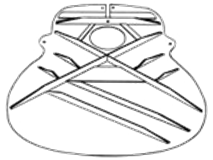
Standard “X” Scalloped
A common topic for guitarists is how the Martin HD-28 guitar differs from the Martin D-28 guitar. In fact, the biggest difference between the two is that they differ in the bracing. This sound bracing is an improvement over some cuts on traditional X-shaped bracings. As you can see from the picture, this bracing is usually used on the Martin HD-28 guitar , Martin HD-35 guitar, or the new Martin Basic series. The biggest difference in tone with the uncut chirp is that the panel weight is reduced, the volume will be louder, the resonance will be better, and the overtone will be easier to emit. If you are a guitarist who loves fingerstyle playing, it is recommended to choose this type of bracing Martin guitar.
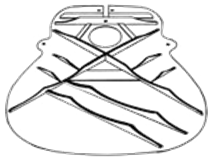
Martin’s scalloped bracing is also divided into two types, one is ordinary scalloping (such as Martin HD28, Martin HD35, etc.), and the other is Golden Era cutting (such as Martin D28 Marquis, Martin GE series, etc.). There are basically three differences between the two:
1) The intersection of Golden Era’s scalloped X-bracing is not a circular section, but a flat section, as in the case of conventional cutting, so that more direct contact with the wood can be added to increase the feedback of the guitar.
2) Golden Era scalloped cuts more material.
3) Golden Era scalloped is hand cut with a finer angle of cut.
These three main differences are designed to increase guitar feedback and sensitivity.
The two sound bracings described above are also divided into X Standard, X Forward Shifted, or X Rear Shifted. The X Standard’s X-cross point is 1.5 inches from the sound hole, providing the most average sound, whether it’s treble or bass (eg Martin D28 , Martin D41, Martin OM42, Martin D45 guitar, etc.) The front X intersection of the X is 1 inch from the sound hole, so that there is more space at the bottom of the guitar, which can provide more bass (Martin D’18 , Martin D’42 , multiple Vintage series, etc.). The X-intersection of the X-shift is 1.75 inches from the sound hole, so that the bottom of the guitar is more compact, the sound provided will be more penetrating, and the bass will be properly reduced due to the more compact bottom. In this case, in the case of recording or more aggressive sweeping, the bass will not be excessively loud (Martin D-28 Authentic 1941, Martin D-18 Authentic 1939 ).
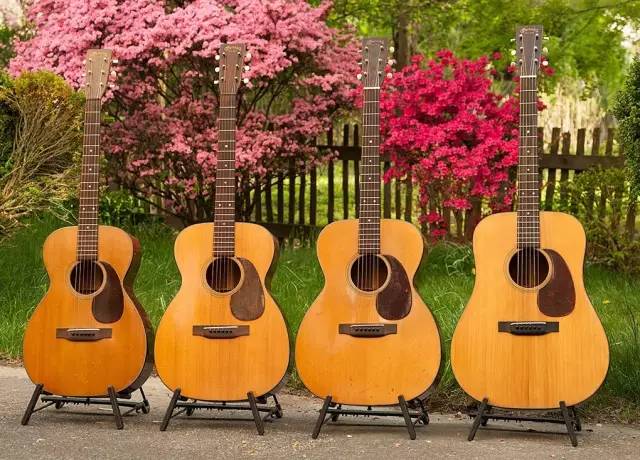
Hybrid “X” Scalloped
1.Hybrid “X” Scalloped: This sound beam, as its name suggests, is a combination of X structure and A frame. This bracing structure is mainly used in Martin’s 16 series and Performing Artist series (Martin D16-RGT, HD16R, DCPA4), mainly combining the A frame to strengthen the neck body. And because it is different from the 15th and 17th series of mahogany materials, the 16 series and the Performing Artist series are spruce panels, so the traditional X structure contributes to the spruce overtone and layered, clear sound.
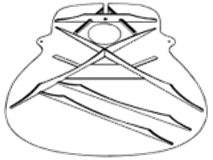
A-Frame “X”
The biggest difference between this structure and the previous two structures is that the original horizontal top plate of the upper part of the guitar becomes the A-type bracket, and the guitar body structure is more compact (tone bar, side bracing has changed from two to one). This design usually appears in Martin’s 15,17 series (Martin D15, D15M, D17, D17M…), which is characterized by an A-shaped structure that provides additional support and rigidity to the structure of the neck and guitar body. In addition, the more complex bracing, the greater the restrictions on the top, this simple sound beam makes the panel more flexible, can better resonate and provide better bass. However, since there is no diagonal bracing, the overtone will be inferior to the ordinary X structure, and the provided sound is not so hierarchical, especially in the high pitch.
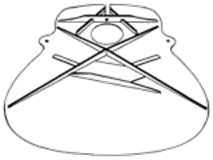
X-Series “X”
This structure is mainly used on Martin’s plywood guitars. The graphite plate between the traditional wooden beam and the X-pronged corner gives the panel maximum stability without sacrificing too much sound. Most of the restrictions on the tone are used in travel guitars or plywood guitars.
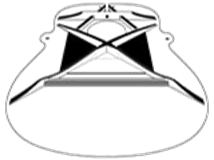
Leave a Reply
You must be logged in to post a comment.